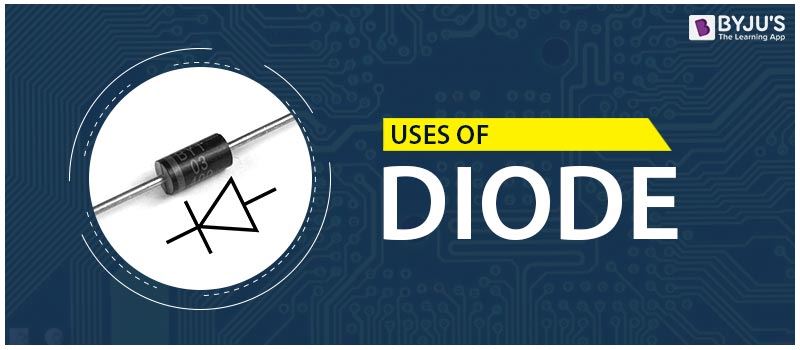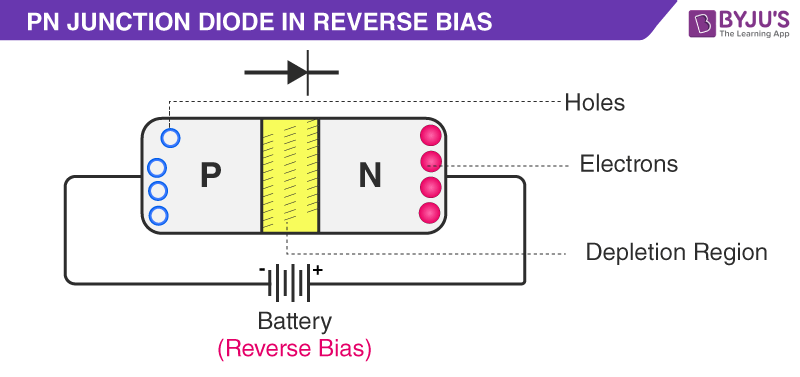
We are aware of diodes as the device with two active electrodes and two terminals allowing current to pass through it only in one direction. One of the core uses of diodes is blocking current flow in one direction and allowing the current to flow in another direction.
Following is the table of links for other related concepts of diode::
How do diodes work?
Before knowing the uses of diodes, we should know that an ideal diode is enclosed in a plastic or glass case to mark the cathode side of it. There are two ways a diode functions, either it is a forward-biased or it is reverse-biased.
|
FORWARD-BIASED |
REVERSE-BIASED |
|
Current flows from anode to cathode. |
Current flows from cathode to anode |
Let us consider a P-N junction type diode;
If the diode is in forward bias, the P-type region is connected with the positive terminal of the voltage source and N-type to the negative terminal. Electrons will get attracted to this terminal and will form a covalent bond with the P-type material.
So, without any hindrance, the PN-junction diode will behave as a short circuit.

When the diode is in reversed bias, the P-type region is connected to the negative terminal and the N-type region is connected to the positive terminal of the source. Because the positive terminal is connected to N-type, the free electrons are attracted towards that region due to the presence of positive terminal.

Applications and Uses of diodes
There are various types of diodes and these diodes are used in numerous ways.
- The most basic function would be changing AC current to DC current by removing some part of the signal. This functionality would make them rectifiers. They are used in electrical switches and are used in surge protectors because they can prevent a spike in the voltage.
- Diodes help in performing digital logic. Millions of diodes are used similar to logic gates and used in modern processors.
- They are used for isolating signals from a supply. For example, one of the major uses of diodes is to remove negative signals from AC current. This is known as signal demodulation. This function is basically used in radios as a filtering system in order to extract radio signals from a carrier wave.
- They are also used in creating power supplies and voltage doublers. Using a full wave rectifier will help to deliver a more stable voltage. Combination of a diode with a capacitor will help to make small AC voltage multiply to create a very high voltage.
- The light emitting diodes or LEDs are used in sensors and also in laser devices any many other light illumination devices.
- Zener diodes are used as voltage regulators and varactors are used in electronic tuning and varistors are used in suppressing AC lines
- Diodes are the basis of op-amps and transistors.
These were some of the uses of diodes that can be seen in the practical world. For more such physics articles and important notes, keep visiting BYJU’S.
Why shouldn’t you touch electrical equipment with wet hands? Find out answer to this question by watching the video.

Frequently Asked Questions – FAQs
What is a diode?
Do diodes aid in transforming AC into DC?
Yes, diodes aid in transforming AC into DC.

Comments